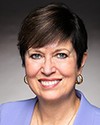Thank you, Mr. Lloyd. You had four seconds left.
We'll go now to Mr. Erskine-Smith for six minutes, please.
Evidence of meeting #60 for Public Safety and National Security in the 44th Parliament, 1st session. (The original version is on Parliament’s site, as are the minutes.) The winning word was amendments.
A recording is available from Parliament.
Liberal

The Chair Liberal Ron McKinnon
Thank you, Mr. Lloyd. You had four seconds left.
We'll go now to Mr. Erskine-Smith for six minutes, please.
Liberal

Nathaniel Erskine-Smith Liberal Beaches—East York, ON
Thanks, Ron.
Noor, thanks for the testimony. I can't imagine. Having been close to it in my own way, but not nearly as close as you were, I can't imagine having to revisit testimony like that. I really appreciate your being here today and your remarks.
Ken, similarly, I appreciate you both standing with the Danforth families and everyone on behalf of our community. It's been a strong voice in support of victims and in support of stronger gun control.
I want to ask not about the detailed nature of the amendments that this committee has been dealing with. Because I'm a visitor today, I want to ask a little bit about the culture war that in some ways at times affects the debate.
At the end of the day—Ken, you and I have had many conversations—we all want to get to the same place where we acknowledge that certain rifles are to be used for hunting. That's as it always has been and as it will continue to be. There are other weapons that are designed for a different purpose and should not be available to everyone in the same way. We want to make sure we have sensible gun control, take public safety seriously and listen to law enforcement, but also listen to victims. Surely we can do both.
Can you speak to how we might get past some of the talking points and get to a sensible discussion where we bring people together?
Member, Danforth Families for Safe Communities
I think that's difficult. I think that, as evidenced by the—
Bloc
Bloc

Kristina Michaud Bloc Avignon—La Mitis—Matane—Matapédia, QC
Thank you.
The interpreter is telling me that it is hard to interpret what Mr. Erskine‑Smith is saying because there are connectivity issues. We were unable to hear the end of his question.
Liberal

The Chair Liberal Ron McKinnon
Thank you.
Mr. Erskine-Smith, could you please give us the last part of your question at least?
Liberal

Nathaniel Erskine-Smith Liberal Beaches—East York, ON
I was just asking Ken to speak to the need to get past some of the talking points. We've had many conversations on this. How do we get to a place where we acknowledge the reasonable use for hunting while also making sure we have the strongest and most sensible gun control measures to protect future victims?
Member, Danforth Families for Safe Communities
Thank you for the question.
I would say it is difficult to find that centre ground, apparently. This is the public safety committee, so almost by its title we feel like this starts with public safety as the primary goal of any of the initiatives here. We would say that reasonable use should be paired very closely with what is required, recognizing that ever more powerful guns, if not used properly, have a lethal impact on victims, which is what happened in our case.
We would say that you should proceed cautiously. We should be adding firearms not with enthusiasm for more power and more capability, but very cautiously and with a view that it's going to be impossible to screen out every person who might abuse their privilege. Therefore, we need to make sure that the weapons are part of the mitigation strategy we have.
As victims and as the general public, we are stakeholders in this discussion as much as anybody else who uses those weapons. That's where you have to find that balance. We would say that now it's apparent to us that the balance is out of whack a little bit. We believe that G-4, and Bill C-21 overall, are an attempt to bring that into line. We hope this committee finds satisfactory middle ground to accomplish that.
Liberal

Nathaniel Erskine-Smith Liberal Beaches—East York, ON
Thanks. I appreciate your being here and I appreciate your advocacy.
I will cede the floor to Ms. Damoff.
Liberal

Pam Damoff Liberal Oakville North—Burlington, ON
Thank you to all our witnesses for being here today.
Ken, I wondered if you could talk a little bit about gun manufacturers. The Coalition for Gun Control said that from “the 1995 orders in council that gun manufacturers will circumvent any lists”. That's one of the reasons they called for a clear definition.
Could you comment on that?
Member, Danforth Families for Safe Communities
Again, maybe as an observer I'll make two observations. Number one, yesterday the article that was in the Montreal Gazette, and I think in the Ottawa Citizen, talked very specifically about new guns coming to market that are really designed to circumvent some of the provisions—that are designed to be able to accept, for example, large-capacity magazines—and there being evidence of communication around that.
The other part I find curious is that, I think with the exception of Wolverine, who's a distributor, we don't really see manufacturers at the table. I don't know if that's a product of the committee or a product of resistance, but certainly, if G-4 passes, and even in the current legislation, it would be interesting to hear their perspective. They're the ones who are designing these guns. What is their intention in their design? Will they abide by the five-cartridge magazine capacity rule that G-4 will establish?
I think we need to hear their voice.
Liberal

Pam Damoff Liberal Oakville North—Burlington, ON
I'd like to thank the National Association of Women and the Law for the letter you released. I encourage people to read it and also to read the 32 organizations that have added their names to it. I always find it disturbing that gender-based violence gets minimized when there's a firearm in the home.
Can you talk a little bit about coercive control and how firearms are used in those situations, Dr. Whitmore?
Executive Director, Ending Violence Association of Canada, National Association of Women and the Law
Yes. Thank you very much for that question.
One thing we wanted to bring to the attention of the committee is the reality that gun violence looks different in the lives of women and girls than it does in the lives of men. Not only can guns lead to femicide or murder. They are also used as tools to control and threaten women who are living in abusive situations. I personally have worked with women, and many of the organizations that are part of our coalition work daily with women, who experience sexual and physical assault by partners who own a firearm. The presence of that firearm in the home makes it much more difficult to leave a situation or reach out for help. It also makes it extremely dangerous.
I also want to draw attention to the fact that gun violence in women's lives is not the same for all women. It's important to understand those distinctions. We know that indigenous women, racialized women and women with disabilities also face increased risk for different forms of violence. We need to take these into account.
Liberal

The Chair Liberal Ron McKinnon
Thank you, Ms. Damoff. I've kind of lost control of my timer, but I believe that's your time, plus or minus a few seconds. I apologize.
Ms. Michaud, you have the floor for six minutes.
Bloc

Kristina Michaud Bloc Avignon—La Mitis—Matane—Matapédia, QC
Thank you, Mr. Chair.
I thank the witnesses for being here with us this morning.
Mr. Price, unfortunately for you, you have become a regular at these committee meetings. When you were speaking with my colleague, Ms. Damoff, you mentioned an article that was published in yesterday's editions of the Montreal Gazette and the Ottawa Citizen. It said that, while we are debating this issue, new weapons are coming on the market, as has been the case for a long time. Since the 2020 regulation, manufacturers continue to circumvent the rules to put new weapons on the market.
From what I understand of Canada's classification of firearms, there are three classes: non-restricted, restricted and prohibited. When a manufacturer puts a new firearm on the market, it is automatically considered a non-restricted weapon. Only later can it become classified as prohibited. The RCMP is not automatically informed of the arrival of all these new firearms on the market, so when it realizes that a new firearm may have to be classified as prohibited or restricted, it conducts an analysis and then the firearm can be classified as prohibited.
Would it be possible to do the opposite? Could a firearm automatically be classified as prohibited before the manufacturer puts it on the market? Then we could wait for the RCMP to analyze it to determine whether it should be classified as non-restricted or remain a prohibited weapon. Perhaps there is a way to include that in Bill C‑21. Perhaps that is another way to change the Firearms Act.
Do you think such a change could be a good thing?
Member, Danforth Families for Safe Communities
I think this follows up on our belief that what should be guiding this is reasonably used rather than commonly used. For example, allowing a gun into the system and then deciding whether it's dangerous after the fact seems backwards, so I would agree with your comment on that. I think the aid that this legislation is intending, from our point of view, is to articulate what that means so that those who are intending to design guns for the Canadian marketplace understand that clearly, because there's been a high level of judgment—to your point—about what's going to be allowable. I think we see that gun manufacturers will design to the very limits of that if left unchecked.
That's why we're supporting this more reasonably driven, proactive approach and a clearer articulation of what is allowable and what is not.
Bloc

Kristina Michaud Bloc Avignon—La Mitis—Matane—Matapédia, QC
Thank you very much.
Ms. Whitmore or Ms. Zaccour, do you have anything you would like to add? Do you think this might be a good idea and that it should be added to Bill C‑21 or to another bill to amend the Firearms Act?
Head of Feminist Law Reform, National Association of Women and the Law
I certainly echo the comments we just heard.
Safety is paramount and the risks must not be a secondary consideration. This proposal is in keeping with that idea.
Bloc

Kristina Michaud Bloc Avignon—La Mitis—Matane—Matapédia, QC
Thank you very much.
I'll continue with you.
The Bloc Québécois is in favour of banning assault weapons. We have held that position for a long time and it has not changed. There were concerns about amendments G‑4 and G‑46, which have been withdrawn. The use of a list has been rather confusing for everyone because the list is hard to follow.
With the help of public servants, we have come to understand that the only list that will actually be continually updated is the RCMP's list. Any new weapon that comes onto the market will be added to that list and not the list of firearms set out in the Criminal Code under Bill C‑21. Rather than using a list, I am wondering whether it would not be better to add some sort of safeguard to the act under which we could add, but not remove, firearms from the RCMP's list to the act without necessarily taking any legislative action.
That might reassure the groups that are advocating for better gun control that we will not start backtracking when it comes to prohibited weapons and those that have already been classified.
What do you think, Mr. Price?
Member, Danforth Families for Safe Communities
Again, I think the intention of having the G-4 amendment is to try to articulate what that ceiling is on capability. That's why we're in support of it. I also might point out that I think other groups and this committee have considered also the loopholes related to large-capacity magazines because that's the other part that I think is of concern to groups: making sure that the guns abide by the five-cartridge capacity limit and that manufacturers are designing to that point and not finding ways around it. I think the combination of those two things—G‑4 and then some closing of the loopholes—is what we're looking for as a group.
Bloc

Kristina Michaud Bloc Avignon—La Mitis—Matane—Matapédia, QC
Before I hand it over to Ms. Zaccour, I would like to continue the discussion on that, Mr. Price.
One of the loopholes that I also see is the wording of the G‑4 amendment, which stated that the firearm had to be designed to accept a magazine with five or more rounds. The bill says nothing about firearms that are capable of accepting magazines with more bullets even though they may not have been specifically designed to do so.
Are you concerned about the wording there? Should we not say “capable of” rather than “designed to”?
Member, Danforth Families for Safe Communities
I think the intention is to ensure that it is designed for capable.... I think this is where, again, having the manufacturers at the table would probably help because it's really their motivation that we're calling into question with the wording as it is. It would be interesting to hear what that motivation is going to be going forward.
Thank you.
Liberal

The Chair Liberal Ron McKinnon
Thank you, ma'am.
We go now to Mr. MacGregor.
Mr. MacGregor, go ahead, please, for six minutes.
NDP

Alistair MacGregor NDP Cowichan—Malahat—Langford, BC
Thank you very much, Mr. Chair.
Hello to my fellow committee members. It's good to see everyone again. I appreciate being here and having this opportunity to ask questions of our witnesses.
Let me thank all of our witnesses for appearing, some who are reappearing.
Dr. Bryant, I'd like to start with you. I'm going to assume that, in your role in Alberta, you have also taken the time to travel to indigenous communities and have consulted with them on this issue. Can you confirm that?